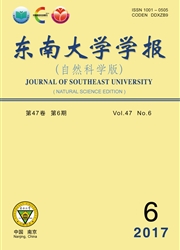

 中文摘要:
中文摘要:
针对CORS系统中流动站观测条件复杂、容易出现周跳的问题,提出了一种分类最小二乘周跳修复算法.首先利用常规周跳探测方法,确定周跳出现的卫星及频率.然后,利用非参考卫星无周跳的观测值构成的误差方程估计流动站实时位置和参考卫星的周跳值,并将估计出的参数带入非参考卫星有周跳的观测值构成的误差方程中,即可在该类误差方程的改正数中获得非参考卫星的周跳值,从而实现流动站的实时定位与周跳修复.实验结果表明,该算法可在多颗卫星同时出现周跳时实现周跳修复和实时精确定位,有效避免了利用抗差估计探测修复周跳时存在的崩溃污染率问题.
 英文摘要:
英文摘要:
To solve the oroblem that the observation conditions in the continuously operating refer-ence station net(CORSNet) are complex and often appear cycle slips, a classified least-square cycle-slip repair algorithm is presented. First, the common cycle-slip detection method is used to determinethe satellites with cycle slip and their frequencies. Then, the error equation composed by the meas-urement values of un-reference satellites with non cycle slips is used to estimate the real-time positionof the rover stations and the cycle slips of the reference satellite. The estimated parameters are substi-tuted into the error equation composed by the measurement values of reference satellites with cycleslips. The cycle slips of un-reference satellites can be obtained from the modified values of the latererror equation, realizing the real-time position and the repair of the cycle slips of the rover stations.The experimental results show that this algorithm can repair the cycle slips and obtain accurate real-time positions when the cycle slips of several satellites appear at the same time. The problem of thebreakdown contamination rate caused by the cycle-slip repair by the robust estimation method is ef- fectively avoided.
 同期刊论文项目
同期刊论文项目
 同项目期刊论文
同项目期刊论文
 期刊信息
期刊信息
